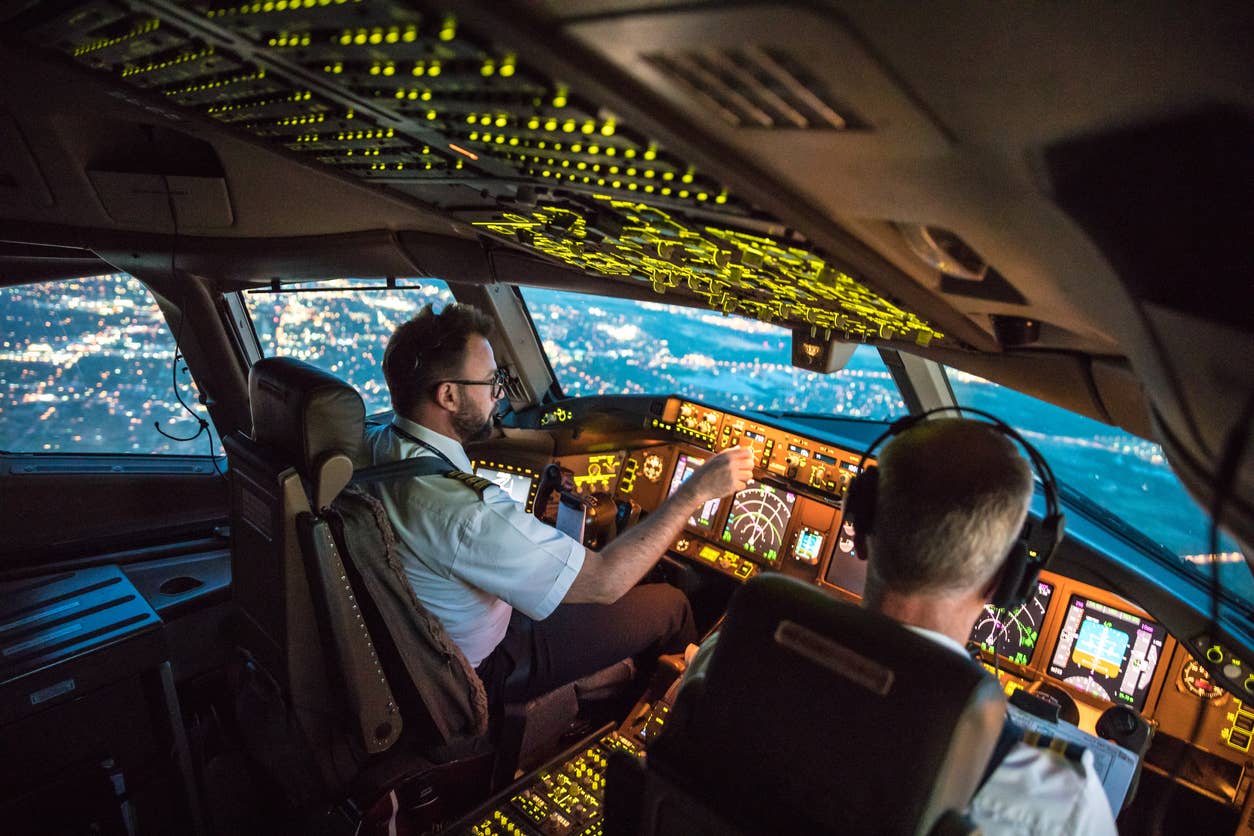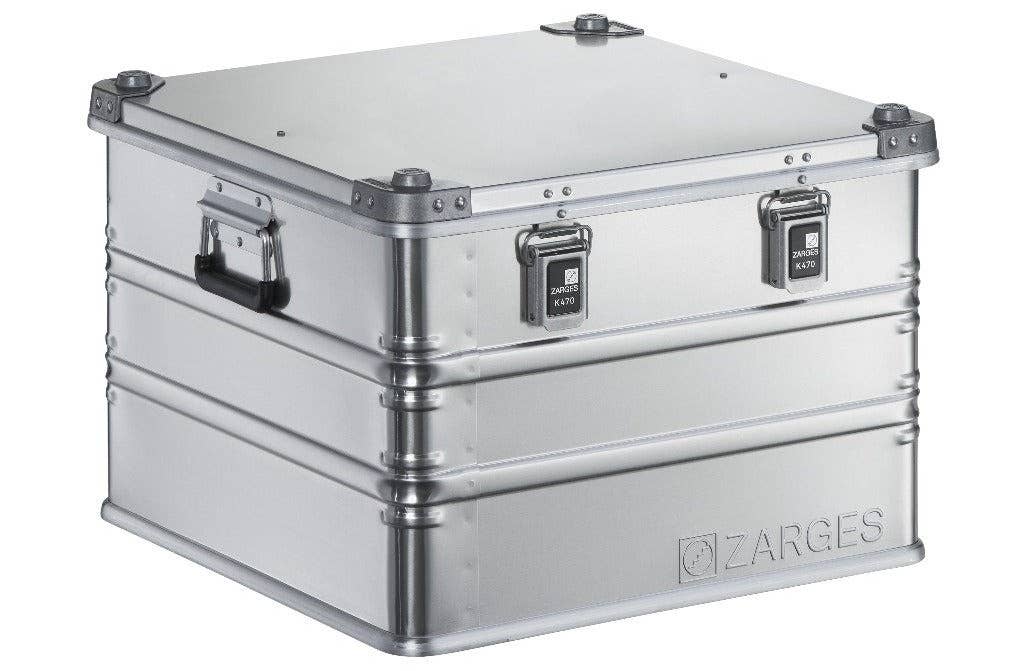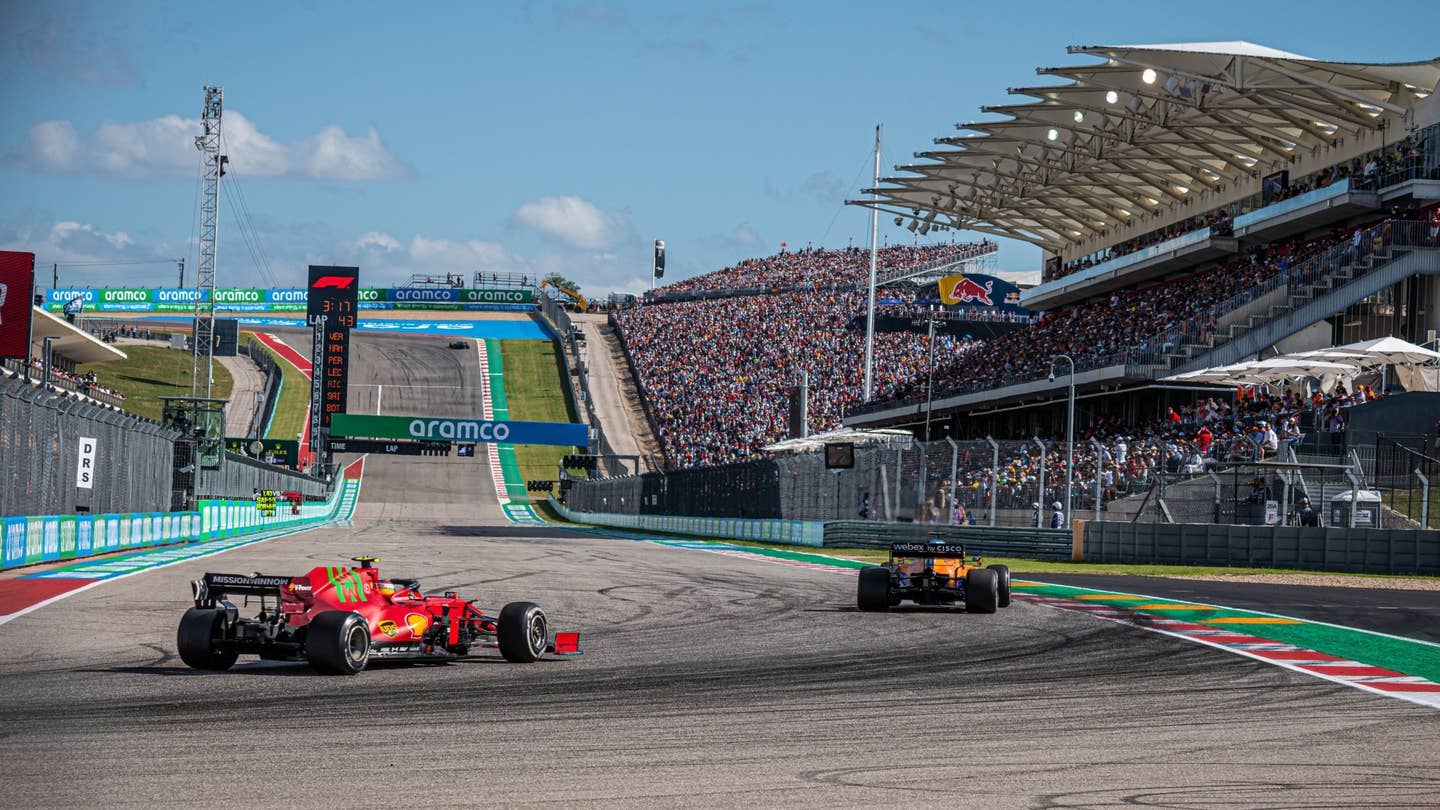
Two male pilots flying a commercial airplane [Credit: Rathke]
Airline pilots average 75 hours per month flying, but they spend approximately another 150 hours each month on other required tasks. Things such as flight planning, obtaining weather forecasts, and other pre- and post-flight activities are necessary for flight. There are restrictions as to how many hours a pilot can fly in order to ensure the safety of the flight.
Types of Pilots and How Many Hours They Work
Commercial Pilot: 85 flight hours and 80 ground hours per month
Flight Instructor: 80-100 flight hours and 100 ground hours per month
Airline Transport Pilot: 75-100 flight hours and 150 ground hours per month
What Determines How Much a Pilot Works?
Federal regulations limiting the number of hours a pilot can fly. They also limit the minimum amount of rest between flights. These boundaries are a large determining factor of how many hours a pilot will spend flying and doing pre-and post-flight duties. The seniority a pilot has with his/her particular airline and the length of flights are also factors.
Other professional pilot jobs require a commensurate amount of flight time worked. They also may require significantly more time on the ground servicing aircraft, flight planning, attending to customers, and other tasks.
Seniority
A seniority number is assigned to a pilot generally based on the date of the pilot’s hire onto the airline. The higher a seniority number a pilot possesses, the more discretion they have when it comes to choosing their schedule. High seniority pilots typically have their pick of trip destinations, based location, aircraft type, and other perks associated with tenure at an airline.
Flight Time Limitations
The FAA limits the amount of hours a pilot can fly consecutively and also within a calendar week, month, and year. Ample rest times are also required between flights of certain lengths in order to remain compliant with FAA safety regulations.
Long-Haul Flights vs Short-Haul Flights
A short-haul flight lasts 30 minutes to three hours, a mid-haul flight lasts three to six hours, a long-haul flight lasts six to 12 hours and an ultra-long-haul flight lasts 12-plus hours. The limitations of flight time impact the pilot depending upon the length of flights. For example, long-haul pilots work longer shifts, but they generally receive longer periods of time off between working days than short-haul pilots.
Work Hours vs. Flying Hours
Although pilots are limited in the number of hours they can fly per week, they still must perform ground duties such as maintenance checks, studying weather reports, building flight plans, refueling, preflight inspections, postflight checks, and so forth.
How Many Hours Can a Pilot Fly Consecutively
Pilots flying for Part 135 and 121 operators are limited by FAA regulations as to the number of hours they can fly within a day, month, and year. Other limitations exist for flight instructors, and for other commercial operations.
Daily
An airline transport pilot can fly up to eight hours per 24 hour period and up to 10 hours if a second pilot is aboard. Pilots are required to rest a minimum of 16 hours post-flight. Some variances to these regulations exist depending on the company’s operations specifications.
Monthly
The average airline pilot flies 75 hours per month, but pilots are allowed to fly up to 100 hours within 30 days.
Yearly
The average airline pilot will fly 700 hours per year and are not to exceed 1,000 flight hours within a 12-month period.
Types of Pilots and How Many Hours They Work
The number of flight hours a pilot works can also depend upon the type of pilot certificate held. Airline transport pilots, in general, tend to log more flight hours than the average pilot working in other types of flight departments, and than flight instructors.
Commercial Pilot
A commercial pilot is generally responsible for checking the safety and security of the aircraft and its systems–including fuel levels and weight and balance–and the accuracy of the flight plan if it was generated by a third party. They are also responsible for communicating with air traffic control as they navigate the route of the flight responding to all changes in conditions.
Hours: Commercial pilots of various types generally fly an average of 75 hours per month and work additional ground hours as compared to the average Airline Pilot.
Average Salary: The median annual salary for commercial pilots is $113,080.
Flight Instructor
Flight instructors train student pilots on how to operate an aircraft, understand flight principles, check safety features and flight instruments, and to take off and land the airplane safely. They also develop specific lesson plans and follow curricula for ground training courses when not logging flight hours. They may also train pilots on the ground using flight training devices or simulators.
Hours: The average flight instructor spends 80 hours per month, but can spend up to 100 hours in flight with another 100 hours of ground instruction per month.
Average Salary: Glassdoor reports that the median annual salary for flight instructors is $137,000. This number is likely inaccurate and calculates hourly pay for a 40-hour work week. In reality, flight instructors are paid $27-50 per flight hour on average. At roughly 80 flight hours per month, this would put the median annual income at $37,000.
Airline Transport Pilot
An airline transport pilot works for an airline that transports passengers and cargo on a fixed schedule. Flight crews typically consist of a captain, who has the final authority for the flight as pilot in command, and a copilot or first officer. Some long-haul flights may require a second officer or flight engineer to monitor systems and relieve the other pilots.
Hours: Airline transport pilots fly an average of 75 hours per month but can fly up to 100 hours in a 30-day period. Many will be away from home for consecutive days during trips with long-haul and/or overnight flights.
Average Salary: The median annual salary for airline transport pilots is $219,140.
Pilot Job Outlook
Fluctuations in the aviation industry cause ebbs and flows in hiring trends, though the overall outlook is positive for pilot jobs. The Bureau of Labor Statistics predicts a 4 percent increase in the number of commercial and airline transport pilots from 2022 to 2032. The average growth rate of all occupations in the U.S. is predicted at 3 percent, putting pilot jobs slightly above average.
Pilots Work Hard, But Enjoy Perks
The average pilot spends 225 hours per month between flight time and ground duties, however, they are afforded anywhere from 12 to 20 days off per month depending on seniority. The higher you climb in the ranks the more control you have of your schedule, flight routes, home base, salary, and days off per month.
Now that you have a much better understanding of how many hours pilots work, you can envision your path to becoming an airline transport pilot, a commercial pilot, or a flight instructor. Build seniority and reap the benefits, but be sure to stay informed every step of the way by subscribing to FLYING Magazine today!
FAQ
What is a typical pilot schedule?
Professional pilots typically fly between 70 and 100 hours per month. Just as many hours, if not more, are spent on the ground performing required tasks related to flight. Most professional pilots have 12 to 20 days off per month, and their schedule changes monthly.
Do pilots have free time?
Yes, pilots have free time. Junior pilots have a minimum of 12 days off per month, whereas the average pilot gets 15 days off per month and a senior pilot can enjoy up to 20 days off per month.
Do pilots go home every night?
Flight instructors and pilots who fly short-haul domestic flights are able to be home every night more or less; however, airline pilots who fly longer routes are unable to go home every night and can be away from home for up to two weeks at a time.
Do pilots choose their hours?
Pilots choose a schedule based on the needs for them and their families and submit a request to the airline. Seniority determines a large part of the schedule granted, routes assigned, and days off awarded per month.

Sign-up for newsletters & special offers!
Get the latest FLYING stories & special offers delivered directly to your inbox






